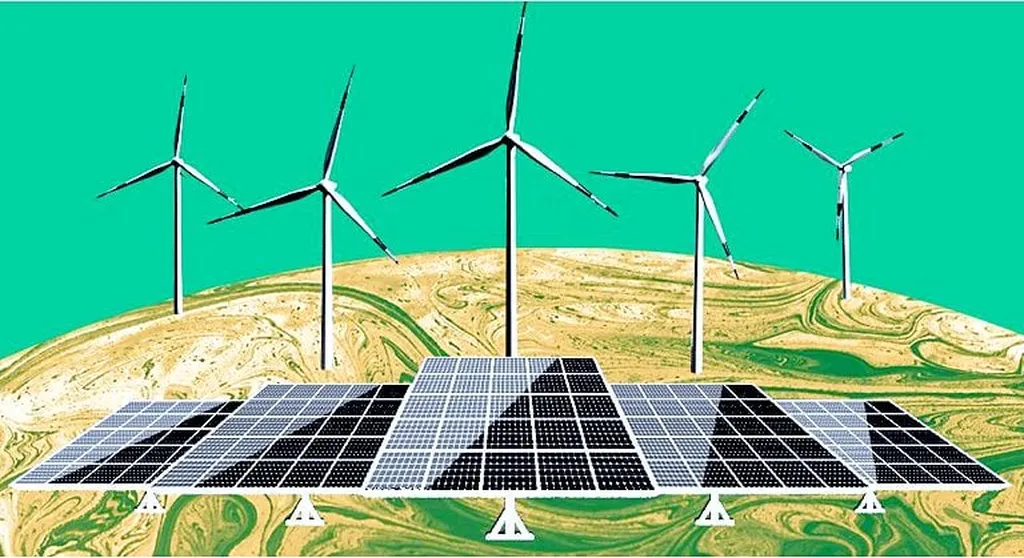The global renewable energy sector is experiencing unprecedented growth, with wind and solar power leading the charge. For the fourth consecutive year, the world is on track to add a record amount of wind and solar capacity. This consistent expansion has analysts optimistic that the international goal to triple global renewable capacity by the end of this decade is within reach, provided the current pace of growth is maintained.
From 2023 to 2025, the addition of renewable energy capacity increased by 29 percent each year, according to data from Ember, an energy think tank. To achieve the tripling target, analysts suggest that this growth needs to continue at a slightly lower, but still robust, rate of 12 percent annually from 2026 to 2030. However, current national targets are only aligned with a doubling of renewable capacity by 2030, which raises concerns about the adequacy of infrastructure to support the necessary expansion.
“Renewables are booming,” said Katye Altieri, an analyst at Ember. “But unless countries urgently update their targets, we risk underbuilding the grids, flexibility, and storage required to support this extraordinary growth.” This warning underscores the need for governments to not only set ambitious targets but also to invest in the infrastructure that will enable the integration of new renewable energy sources into the grid.
This year, solar power is expected to dominate new renewable capacity additions, with approximately four times more solar installations than wind power worldwide. China continues to be a major player in the renewable energy sector, accounting for roughly two-thirds of new wind and solar capacity globally. This leadership position highlights China’s significant role in shaping the future of renewable energy and its potential to influence global energy markets.
For the agriculture sector, the growth of renewable energy presents both opportunities and challenges. On one hand, the increased adoption of renewable energy can lead to lower energy costs for farmers, as they may be able to generate their own power through solar or wind installations. This can improve the economic viability of farming operations and reduce their carbon footprint. Additionally, the development of renewable energy infrastructure can create new revenue streams for farmers, such as leasing land for solar or wind projects.
On the other hand, the rapid expansion of renewable energy may also pose challenges for the agriculture sector. The development of renewable energy projects can compete with agricultural land use, potentially leading to conflicts over land use and resource allocation. Furthermore, the integration of renewable energy into the grid may require significant investments in infrastructure, which could strain public resources and potentially lead to higher energy costs in the short term.
For investors, the growth of renewable energy presents a significant opportunity. The renewable energy sector is expected to continue its rapid expansion, driven by technological advancements, falling costs, and increasing demand for clean energy. This growth is likely to create new investment opportunities in renewable energy projects, as well as in the infrastructure and technologies that support the integration of renewable energy into the grid.
However, investors should also be aware of the potential risks associated with the rapid expansion of renewable energy. The underbuilding of infrastructure, as warned by Ember, could lead to delays in the integration of new renewable energy sources into the grid, potentially impacting the profitability of renewable energy projects. Additionally, changes in government policies and regulations could create uncertainty for investors, making it important to carefully evaluate the political and regulatory environment before making investment decisions.
In conclusion, the growth of renewable energy presents both opportunities and challenges for the agriculture sector and investors. While the increased adoption of renewable energy can lead to lower energy costs and new revenue streams for farmers, it may also pose challenges related to land use and infrastructure development. For investors, the rapid expansion of renewable energy creates new investment opportunities, but also comes with risks related to infrastructure development and policy changes. As the renewable energy sector continues to evolve, it will be important for stakeholders to carefully evaluate these opportunities and challenges and to work together to ensure a sustainable and prosperous future for all.

